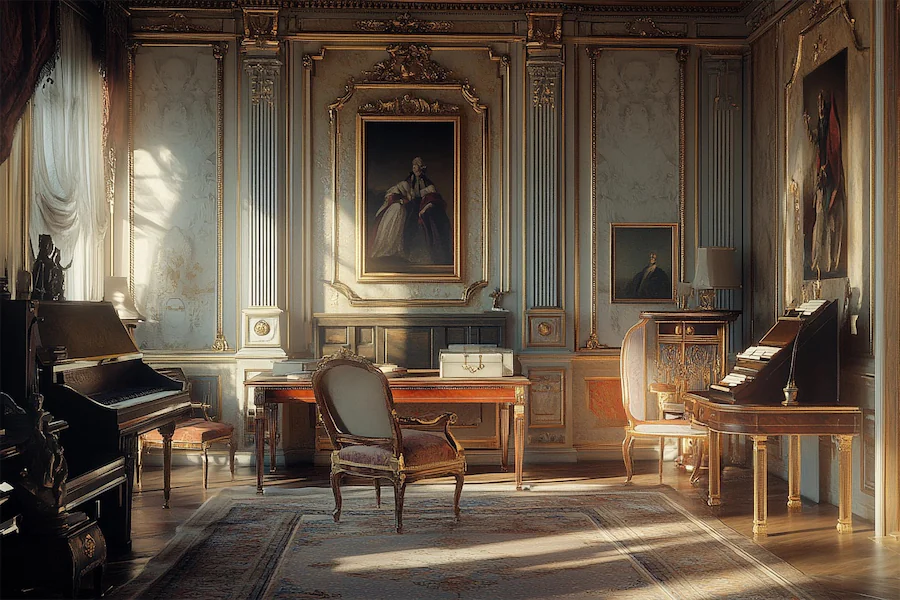A Neoclassical Revival office room embodies the elegance and grandeur of classical architecture, creating a workspace that exudes sophistication and timeless appeal.
Introduction to Neoclassical Revival Office Rooms
Neoclassical Revival design draws inspiration from the classical architecture of ancient Greece and Rome, emphasizing symmetry, proportion, and the use of classical orders. In an office setting, this style incorporates refined materials, intricate detailing, and a harmonious color palette to establish an environment of professionalism and grace.
History and Origins of Neoclassical Revival Office Rooms
Neoclassical architecture emerged in the mid-18th century as a reaction against the ornate Rococo style, seeking a return to the simplicity and grandeur of classical antiquity. This movement influenced various aspects of design, including interior spaces like offices, where the emphasis on order and formality aligned with professional environments.
Key Features of Neoclassical Revival Office Rooms
- Symmetry and Proportion: Designs are meticulously balanced, with furnishings and architectural elements arranged to create a harmonious and orderly space.
- Classical Elements: Incorporation of columns, pilasters, and cornices that reference ancient Greek and Roman architecture, adding a sense of grandeur.
- Refined Materials: Use of high-quality materials such as marble, rich woods, and luxurious fabrics to convey elegance and durability.
- Muted Color Palette: Employment of soft, neutral tones like creams, grays, and taupes to create a serene and sophisticated atmosphere.
- Intricate Detailing: Inclusion of decorative moldings, ornate carvings, and classical motifs that add depth and character to the space.
Applications of Neoclassical Revival Office Rooms
- Executive Offices: Designing spaces that reflect authority and refinement, suitable for high-level professionals.
- Law Firms and Financial Institutions: Creating environments that convey stability, tradition, and trustworthiness to clients and employees.
- Home Offices: Establishing a workspace that combines classical beauty with modern functionality, enhancing productivity in a luxurious setting.
Considerations When Designing a Neoclassical Revival Office Room
- Authenticity: Incorporate genuine classical elements and high-quality materials to maintain the integrity of the style.
- Functionality: Ensure that the elegant design does not compromise the practical needs of the workspace, such as ergonomics and technology integration.
- Lighting: Utilize both natural and artificial lighting to highlight architectural details and create a welcoming ambiance.
Conclusion
A Neoclassical Revival office room offers a blend of classical elegance and modern functionality, resulting in a workspace that is both inspiring and efficient. By thoughtfully integrating key features such as symmetry, classical elements, and refined materials, one can create an environment that reflects the timeless beauty of neoclassical design.
